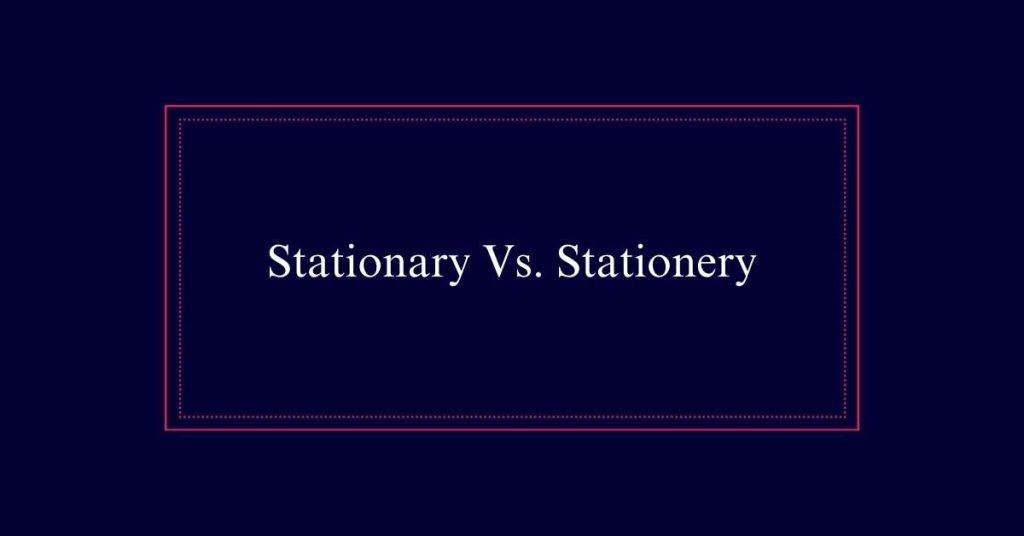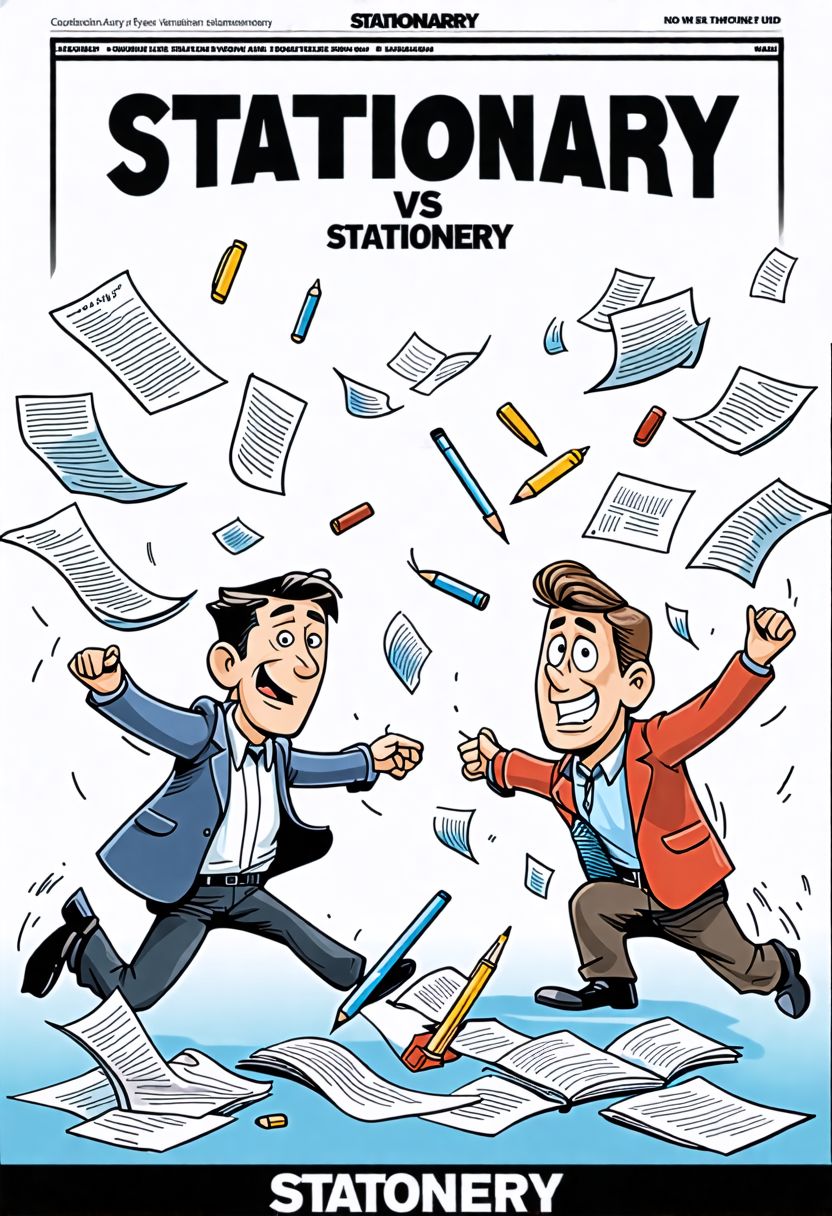Stationary Vs. Stationery
The words “stationary” and “stationery” have distinct meanings. “Stationary” refers to something that is immobile or unchanging, like a stationary bike or a historical monument. It emphasizes stability and lack of movement. On the other hand, “stationery” pertains to writing materials such as paper, envelopes, and pens.
Definition of Stationary
Stationary refers to something that is fixed, immobile, or not subject to change. It describes objects or conditions that do not move or alter.
For instance, a stationary bike is a piece of exercise equipment that remains in one place, providing a workout without movement. Similarly, a stationary reminder of history, such as a statue or monument, stays in a single location, serving as a constant symbol of past events.
The term ‘stationary’ underscores stability and permanence, signifying the lack of motion or variation.
Examples of Stationary
Engaging in activities such as riding a stationary bike at the gym illustrates the concept of immobility inherent in the term ‘stationary’.
A stationary bike remains fixed in place, providing exercise without movement across a distance.
Another example is a stationary cruise, often themed, where the vessel does not travel but offers an immersive experience docked at the port.
Historical monuments also serve as stationary reminders of the past, standing immobile yet impactful.
These examples underscore the essence of ‘stationary’—signifying something that does not move or change location.
Definition of Stationery
Stationery encompasses papers, envelopes, and other materials used for writing letters or cards. It is essential for personal and professional communication. The term broadly includes items designed to facilitate written correspondence and organization. Stationery not only serves functional purposes but can also reflect personal style and intent.
Here is a quick overview to better understand stationery:
| Category | Examples | Purpose |
|---|---|---|
| Paper | Letterheads, Notebooks | Writing, taking notes |
| Envelopes | Standard, Padded | Sending letters or documents |
| Accessories | Pens, Pencils | Writing, editing |
| Organizational | Folders, Binders | Storing, organizing documents |
| Decorative | Stickers, Washi Tape | Personalizing, embellishing |
Examples of Stationery
In understanding the various tools that fall under the category of stationery, it is helpful to explore specific examples. Stationery encompasses a wide range of items, including paper, envelopes, pens, pencils, and notebooks.
Personalized letterheads and business cards are also considered stationery. Additionally, sticky notes, planners, and diaries fall under this category. Specialty items like calligraphy sets and high-quality writing paper are popular among enthusiasts.
Retailers such as Smiggle offer colorful and unique stationery products, catering to both children and adults. Many hotels provide complimentary stationery for guests, including branded notepads and pens.
Stationery stores often showcase a variety of greeting cards, wrapping paper, and art supplies, making them a go-to for diverse writing and creative needs.

Common Confusions
A common source of confusion arises from the similar spelling of ‘stationary’ and ‘stationery.’ Despite their almost identical appearance, these terms have distinct meanings and uses.
‘Stationary’ describes something that is not moving or is fixed in one place. In contrast, ‘stationery’ refers to writing materials like paper, envelopes, and pens. Misusing these words can lead to misunderstandings, especially in written communication.
Here are some common confusions:
- Using ‘stationary’ when referring to writing materials.
- Saying ‘stationery’ to describe something immobile.
- Mistaking one term for the other in professional or academic writing.
Correct Usage Tips
To guarantee clear and precise communication, here are some tips for correctly using ‘stationary’ and ‘stationery’. Remember, ‘stationary’ is an adjective that means immobile or not moving, while ‘stationery’ refers to writing materials.
To help you differentiate between the two, consider the following table:
| Term | Usage Example |
|---|---|
| Stationary | The car remained stationary. |
| Stationery | She bought new stationery for school. |
| Stationary | He used a stationary bike at the gym. |
| Stationery | The office provides free stationery. |
| Stationary | The statue is stationary in the park. |
Stationary in Daily Life
Stationary objects play a significant role in our daily routines, providing stability and structure. They are often overlooked, yet their presence is essential in various aspects of life. Fixed and immobile items offer a sense of order and reliability.
For instance, a stationary desk setup helps maintain a productive work environment. Similarly, traffic lights and signs, which remain in place, guarantee road safety and efficient traffic flow. Additionally, landmarks such as statues serve as constant reminders of history and culture.
- A stationary desk setup fosters productivity.
- Traffic lights guarantee road safety.
- Statues remind us of historical events.
Stationery in Daily Life
While stationary objects provide stability, stationery items bring creativity and personal touch to our daily interactions. Whether jotting down notes or sending a heartfelt card, stationery plays an essential role. Schools, offices, and homes benefit from the variety and functionality of these materials. From elegant letterheads to brightly colored sticky notes, stationery items enhance communication and organization.
| Type of Stationery | Uses |
|---|---|
| Notebooks | Taking notes |
| Envelopes | Sending letters |
| Pens and Pencils | Writing and drawing |
| Sticky Notes | Quick reminders |







